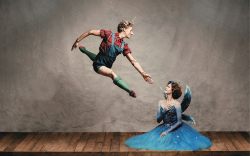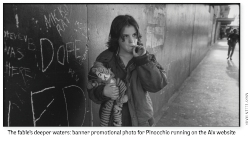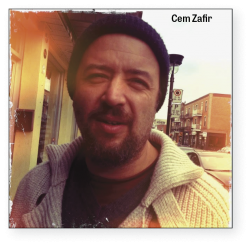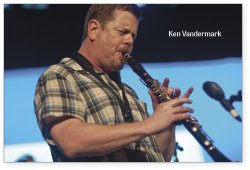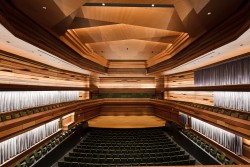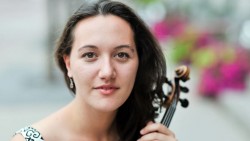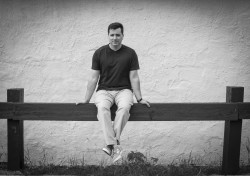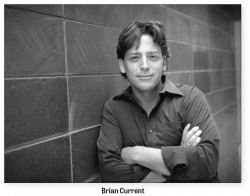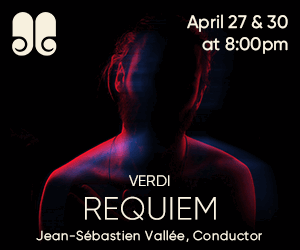Meet The Curators - Luminato’s Josephine Ridge
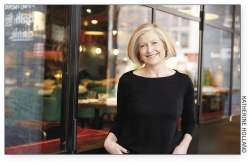 Luminato heads into into its 11th iteration this coming June 14 to 25. Josephine Ridge, the festival giant’s new artistic director, is heading into her first. “This is David Perlman, the editor of The WholeNote,” says the Luminato staffer introducing me to Ridge, in a bright little meeting room in their Artscape Youngplace offices.
Luminato heads into into its 11th iteration this coming June 14 to 25. Josephine Ridge, the festival giant’s new artistic director, is heading into her first. “This is David Perlman, the editor of The WholeNote,” says the Luminato staffer introducing me to Ridge, in a bright little meeting room in their Artscape Youngplace offices.
“We’ve had a great relationship with The WholeNote over the last number of years,” the briefing-on-the-fly continues. “I’d say my favourite thing about The WholeNote team is that lots of people who contribute to The WholeNote are also artists or musicians, or work in various areas in the community, so there’s always really great insight from that team because of their personal experiences.”
(Already, for me, before the interview even starts, there’s a slightly different feeling to the encounter: these are not necessarily details that would have been of particular interest to Ridge’s predecessor.)
Ridge arrives at Luminato straight from three years as artistic director of the Melbourne Festival in her Australian homeland. “I realize it’s still early days,” I say, “but are there useful comparisons you can make?”
“So many people comment on similarities temperamentally between Canadians and Australians and particularly about Toronto and Melbourne being quite similar. And I think superficially they are right,” she says. “There are similarities in terms of the look and feel in particular. In terms of the layout they are both grid-based cities with a distinct watery edge – and Melbourne could make more of its water edge as well. Melbourne’s festival is in October, which is masquerading as a spring month but tends to be distinctly cool. Kids are heading into exams…but I think that the similarities between the cities finishes quite soon once you start digging under the surface of things.
“Certainly when I arrived I felt quite easily at home and was given a wonderful warm welcome, but then there’s the whole discovery of working out the neighbourhoods and how it fits together. It’s tremendously spread out – both cities are, but Toronto even more so. I know the whole molecular structure of the place changed with amalgamation into the GTA. But it’s really tremendous to go to a new city and start finding out those areas that are different - what makes it tick and gives it its personality.”
“So what are the things you’re finding here where you say ‘Aha, I recognize that one’?” I ask.
“So, the things from a cultural and artistic perspective that are immediately obvious are that there are tremendously active, good-quality layers through the whole arts ecology here…a really active independent sector, and that feeds of course into the other layers: marvellous opera, ballet, symphony, chamber music. Culturally that’s really important to the health of the city - that you’ve got those layers where there’s some fluidity between them, where there’s some connection where you can see how that ecology actually works. That is a similarity with Melbourne for sure. The other thing is that both cities are big music towns, and music in all the genres, so from contemporary through all forms of popular to classical. So I think that’s a really distinguishing characteristic of both cities. And audiences who are really discerning and know their music and understand the niche interests, and I think that’s fantastic.
“Those things I recognized very fast. And one of the things that’s important for Luminato and one of the things that I really believe deeply is that the role of a festival has to be integrated within the whole cultural landscape, and the organizations and institutions who are working all year. It is our job to figure out what we can do with them or what we can do that is going to add to what they are doing. So that means you’ve got to sit down and talk to as many people as you possibly can, and that’s been a fantastic process and I have really enjoyed it. It doesn’t mean that all of those conversations immediately bear fruit, but it means that you start conversations where over the coming years the audiences will start to see where those discussions have led.”
“So how do you get in step, with the big organizations especially, when they are programming two and three years out already?” I ask. “That’s a timeline thing, really,” she says. “I arrived here properly in July last year, and the TSO, for example, right now is programming through 2019, so that’s actually a really good example. When I arrived I started living in three years straight away at the same time. I have to. That’s enabled us to start developing some projects and collaborations that will come through in the next few years, because I needed to start those conversations right away in order for that to happen. It’s an important part of what we should be doing, because otherwise we are just a series of events that we are presenting that are not necessarily deeply contributing as a part of what’s going on.”
I remind her of the original Luminato slogan, “Bringing the World to Toronto,” suggesting to her that the ambiguity of it was a bit of a stumbling block: “Is the mandate supposed to be about bringing the best of the world’s art to Toronto, or is it pitching government, tourism in particular, on the potential of bringing the world to Toronto to watch a great city at play?”
“The answer is both,” she says. “I think that in order to be a festival that brings people from the world here, we have to have a really solid, deep relationship with the local arts and its companies and institutions because that’s about us connecting the local with the global. I don’t think Luminato can ever be only a festival about bringing arts from elsewhere. Because it’s also about providing that international context for local artists. Partly the ambiguity in that statement as you say is that it allows both interpretations. But as a statement it also goes back to the roots, you remember, because Luminato was founded in that post-SARS era when there was this desire to get everything going again. So it’s no mistake that the initial funding for Luminato came massively top-down from tourism, and that initial slogan reflected those origins.
“But I think it always has to be both. And I think, more than that, it’s going to be even more exciting when we can identify projects where we are enabling international collaborations. So that’s something I am looking to in the future.”
Looking at this first Luminato lineup with a Josephine Ridge thumbprint, it’s not all about looking to the future either. There’s already more musically in this festival to catch the attention of those of us working in “various areas of the community” than in any past iteration of the festival I can recall. Not musical behemoths, but a sense that music is everywhere you look.
“One of the things about this year is the quantity of genre-defying work. It’s wonderful territory for a festival. Music is central to it, but you diminish it by trying to categorize it. Almost everything has live music, a musical pulse.”
Where the comparison between Melbourne and Toronto finally does break down is that her commitment there was for a pre-set three-year term. And here? “It’s open,” she says. “I hope it will be for as long as the soil is good for the things we are trying to do.”


